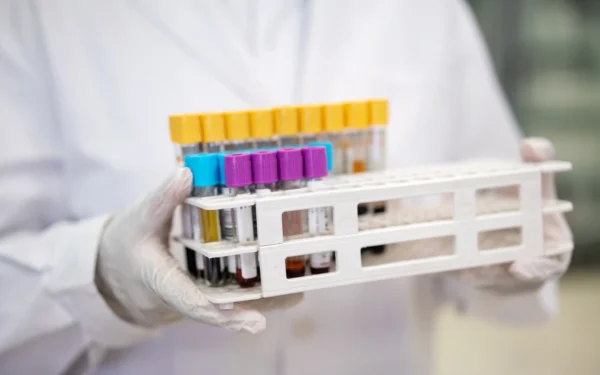“In vivo” is a Latin term that translates to “within the living.” In scientific research, particularly in biology, pharmacology, and medicine, “in vivo” refers to experiments or studies conducted within living organisms, such as animals or humans. This kind of research is mainly used in the fields of pharmacology, toxicology, and biomedicine. In vivo experiments serve as invaluable tools for understanding biological processes, disease mechanisms, and the effects of potential treatments within living organisms.
However, conducting these experiments comes with challenges:
- Complexity – In vivo studies involve the entire organism, encompassing multiple organ systems, cellular interactions, and physiological responses. This complexity allows researchers to study biological processes in their natural context.
- Relevance – In vivo models closely mimic the physiological conditions found in living organisms, making them highly relevant for understanding human biology and disease processes. This relevance is significant in drug development and toxicology studies, where the ultimate goal is to develop safe and effective human treatments.
- Ethical Considerations – In vivo research often raises ethical considerations, mainly because it involves using animals or human subjects. Researchers must adhere to strict ethical guidelines and regulatory standards to ensure the humane treatment of research subjects and the responsible conduct of research.
In vivo studies are complex and can produce vast amounts of data. They are also required to ensure regulatory compliance and require collaboration among researchers, all of which pose significant challenges. Often, these complex research studies can be run across multiple sites, meaning a central location for all information to one point of truth will reduce errors, increase collaboration, and speed up data analysis and understanding.
In vivo experiments study biological processes within living organisms, such as animals or humans. These experiments are crucial for various purposes:
- Drug Development – Assessing new pharmaceutical compounds’ efficacy, safety, and pharmacokinetics.
- Disease Modelling – Understanding disease progression, identifying potential therapeutic targets, and evaluating treatment strategies.
- Toxicology Studies – Investigating the effects of chemicals, drugs, or environmental factors on living organisms.
Some of the data points being produced include (but are not limited to) physiological measurements, genetic analysis, behavioural observations, and any follow-up investigations. These experiments provide valuable insights into the complex interactions that drive health and disease, ultimately contributing to developing new therapies and interventions to improve human health. A Laboratory Information Management System (LIMS) such as Sapio’s can help streamline data management, enhance efficiency, foster collaboration, and facilitate scientific discovery and understanding.
How Does Sapio’s In Vivo LIMS Module Help Streamline In Vivo Research?
A LIMS empowers researchers to make informed decisions, collaborate effectively, and comply with regulatory requirements by providing a centralised platform for data storage, organisation, and analysis. Here’s how Sapio’s highly configurable LIMS can enhance in vivo research:
- Streamlined Sample Management and Sample Tracking: A LIMS software solution simplifies the tracking and management of biological samples used in in vivo experiments. From specimen collection to storage and analysis, LIMS ensures sample integrity, traceability, and compliance with ethical guidelines. Researchers can easily record sample information, track sample (including their location and usage), and retrieve relevant data when needed.
- Efficient Data Organization and Analysis: With LIMS, researchers can effectively organise and analyse various datasets obtained from in vivo experiments. LIMS allows researchers to store experimental data, such as genomic, proteomic, and phenotypic data, in a structured format, helping improve data quality. Additionally, a LIMS is equipped with advanced data analysis tools that support data visualisation, statistical analysis, and hypothesis testing. This empowers researchers to identify meaningful patterns, gain valuable insights from their data and ultimately improve decision-making.
- Automation of Workflows: LIMS automates routine laboratory workflows, reducing human error and accelerating research progress. By automating tasks such as data entry, sample processing, lab instrument data collection, and report generation, LIMS frees researchers’ time to focus on experimental design, data interpretation, and scientific innovation. Automation also enhances experimental reproducibility and ensures consistency across assays.
- Regulatory Compliance and Documentation: In vivo research is subject to strict regulatory requirements, including ethical approval, data integrity, and reporting standards. LIMS assists researchers in staying compliant with regulatory guidelines by offering features such as electronic record-keeping, audit trails, quality control, and documentation of experimental protocols. With a GMP LIMS, researchers can guarantee their research data’s integrity, traceability, and reproducibility.
- Facilitated Collaboration and Knowledge Sharing Collaboration: LIMS is crucial for advancing scientific knowledge and promoting innovation in in vivo research. It fosters collaboration among researchers by offering a centralised platform for sharing data, communication, and project management. This enables researchers to securely share data, collaborate on analysis, and exchange insights in real-time, irrespective of geographical location or organisational affiliation.
Conclusion
Enhancing in vivo research with a cloud-based LIMS represents a significant leap forward in scientific advancement. In vivo experiments conducted within living organisms hold immense potential for unravelling the complexities of biological processes, disease mechanisms, and therapeutic interventions. However, these endeavours are challenging, ranging from managing vast data to ensuring regulatory compliance and fostering collaboration among researchers.
Implementing LIMS addresses these challenges head-on, providing a centralised platform for streamlined laboratory management and data management, enhanced efficiency, and facilitated collaboration. By leveraging a LIMS system, researchers can seamlessly track and manage biological samples, organise and analyse diverse datasets, automate routine workflows, ensure regulatory compliance, and facilitate knowledge sharing among multidisciplinary teams.
Sapio’s in vivo LIMS solution offers researchers a comprehensive solution for managing the complexities of in vivo research. From streamlined sample management to efficient data organisation and analysis, workflow automation, regulatory compliance, and facilitated collaboration, Sapio’s LIMS software empowers researchers to accelerate scientific discovery, drive innovation, and ultimately improve human health.





